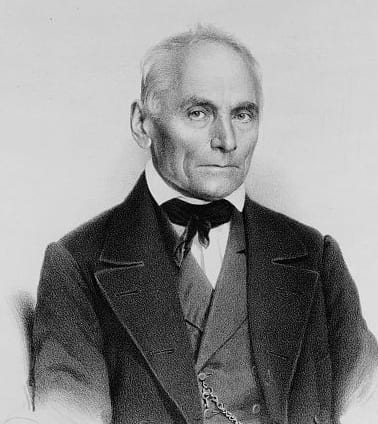 Ophthalmologists have played an integral role in the development and usage of ophthalmic equipment. That’s why we’re going to begin a discussion today of some of the most influential people in the history of eye care. First up: Jan Evangelista Purkinje.
Ophthalmologists have played an integral role in the development and usage of ophthalmic equipment. That’s why we’re going to begin a discussion today of some of the most influential people in the history of eye care. First up: Jan Evangelista Purkinje.
Born in 1787, Purkinje is known for Purkinje’s cells and Purkinje’s images. He was a Czech nationalist and took part in scholarly thinking regularly. He was interested in a wide range of subjects and even translated some of Shakespeare’s works into Czech.
He was quite innovative and even conducted experiments on his own body to get more accurate results. He also started the very first physiology department at the University of Breslau, which is located in Prussia. He was particularly fascinated with sight and experimented with several drugs to see their effect on sight. Belladonna was a particular favorite.
His role in the development of ophthalmic equipment is revolutionary. he discovered Purkinje’s cells. These cells are nerve cells located in the cortex of the cerebral cortex and have many branches extending from them. He also found Purkinje fibers, which are tissues that are located inside the ventricles of the heart and act like a pacemaker. He found germinal vesicles, or sweat glands, and realized that fingerprints could be used as identification.
To say he was well rounded and well versed in the physiology of the human body is an understatement. He took every opportunity to explore the body and how it worked. He also worked hard to create new ways of looking at things. This is why he’s so influential in the development of ophthalmic equipment. He simply approached the human body in different ways than anyone else did before him.
With the discovery of Purkinje’s cells, he found that they are some of the largest neurons in the entire brain. They are very complex and have several dendritic spines. When these cells are damage or malformed at birth, people could have difficulty determine how far away they are from objects.
Purkinje’s images is another one of his biggest discoveries. These images are the reflections of objects from structures within the eye, and they influenced the creation of ophthalmic equiptment on many levels. He also found the Purkinje shift, which describes how red and blue colors change brightness as the intensity of light becomes reduced at dusk each day.
Additionally, he was an early adopter of the compound microscope. He died in 1868.
Picture credit: Wikipedia
